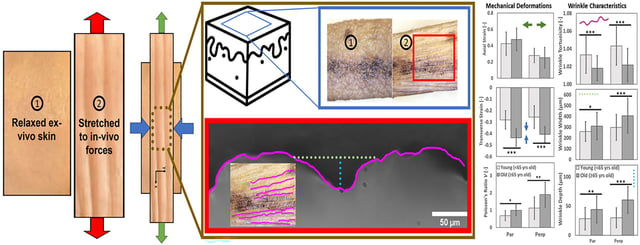Overview
- The study by Guy German’s team at Binghamton University is the first to experimentally validate age-related wrinkle theories with actual human skin samples
- Using a low-force tensometer to stretch skin strips from donors aged 16 to 91, researchers observed that lateral contraction under tension increases with age, causing buckling
- Results confirm that skin is inherently pre-stretched, with internal tensile forces driving wrinkle formation as contraction intensifies
- Chronological aging yields mechanical effects similar to those from chronic sun exposure, producing comparable increases in contraction that lead to buckling
- Published in the Journal of the Mechanical Behavior of Biomedical Materials, the findings establish a rigorous physical basis for evaluating anti-aging treatments
